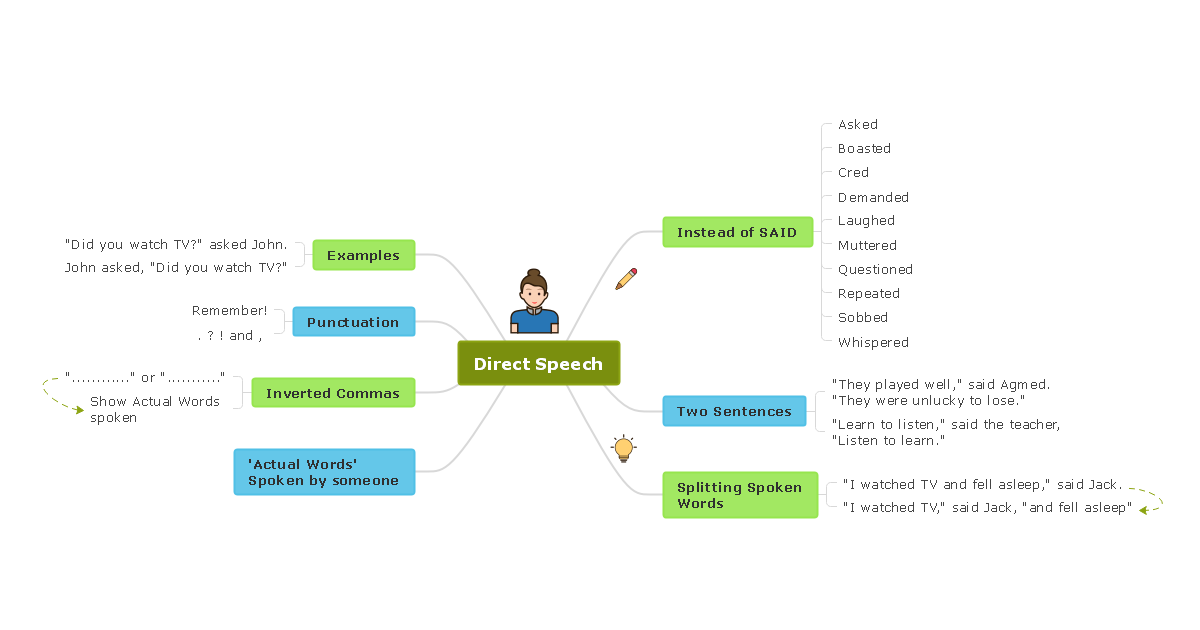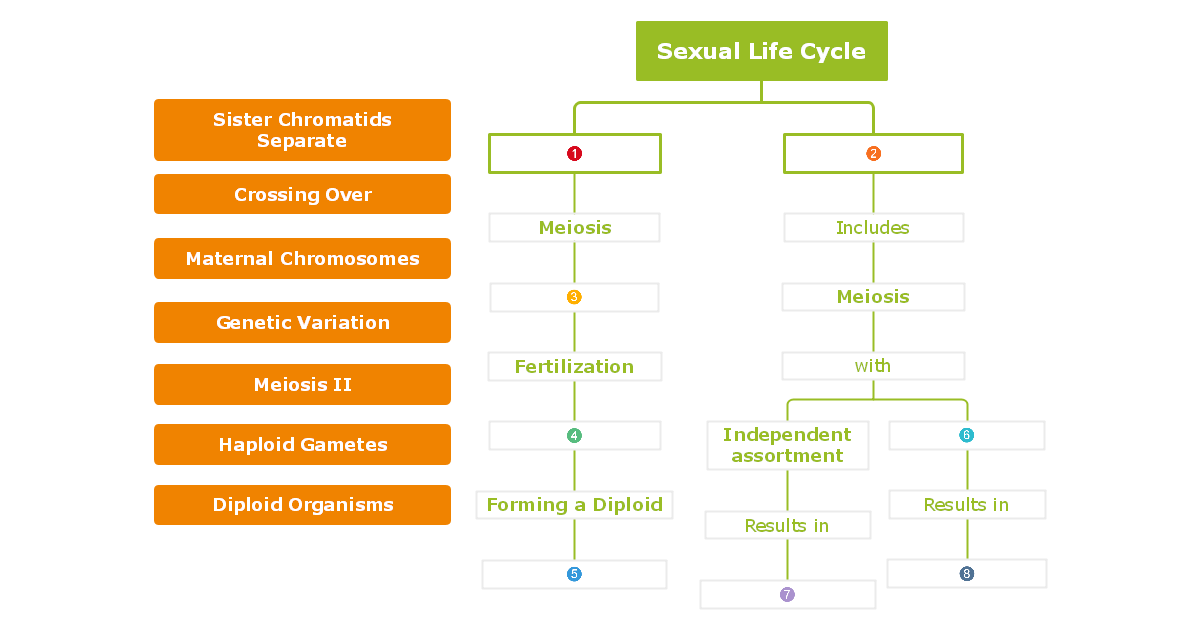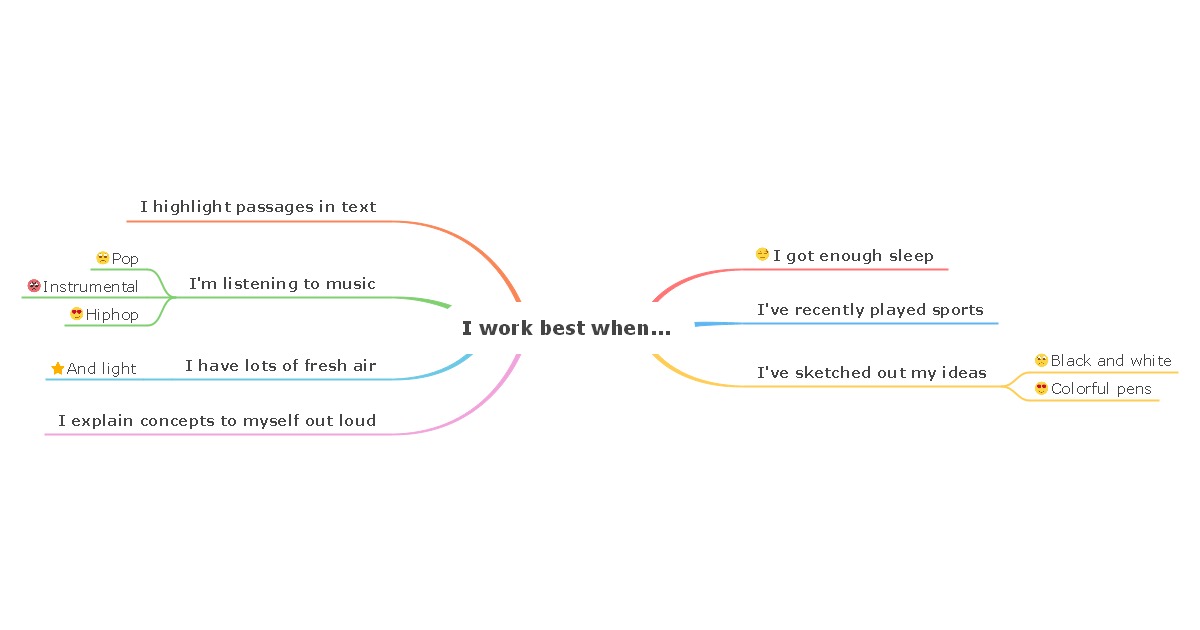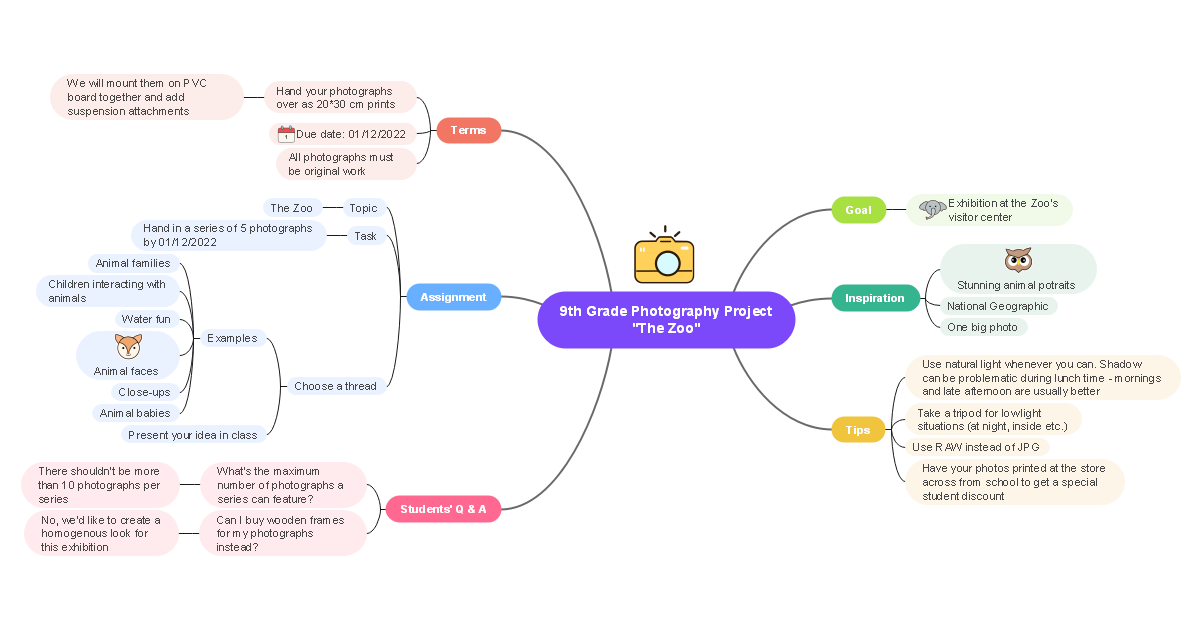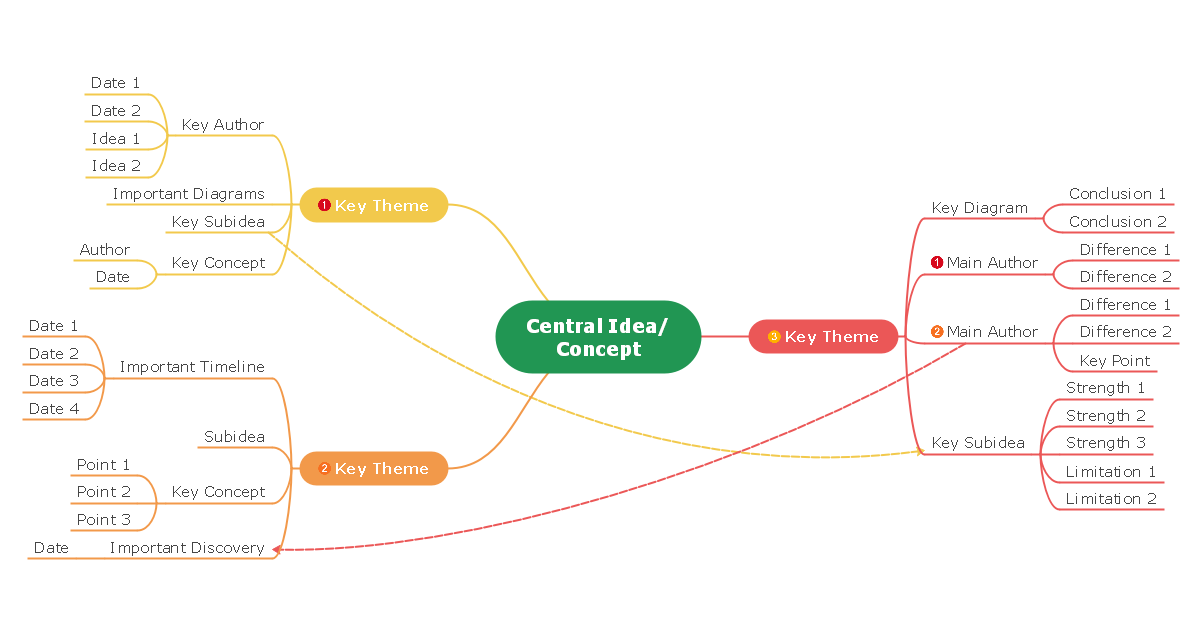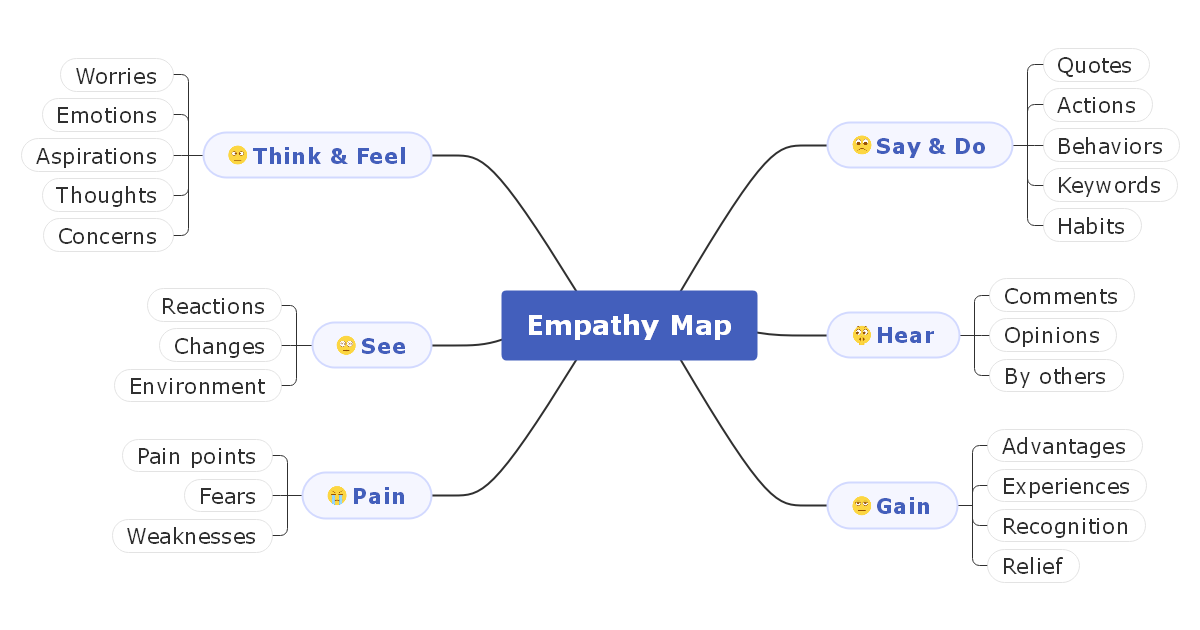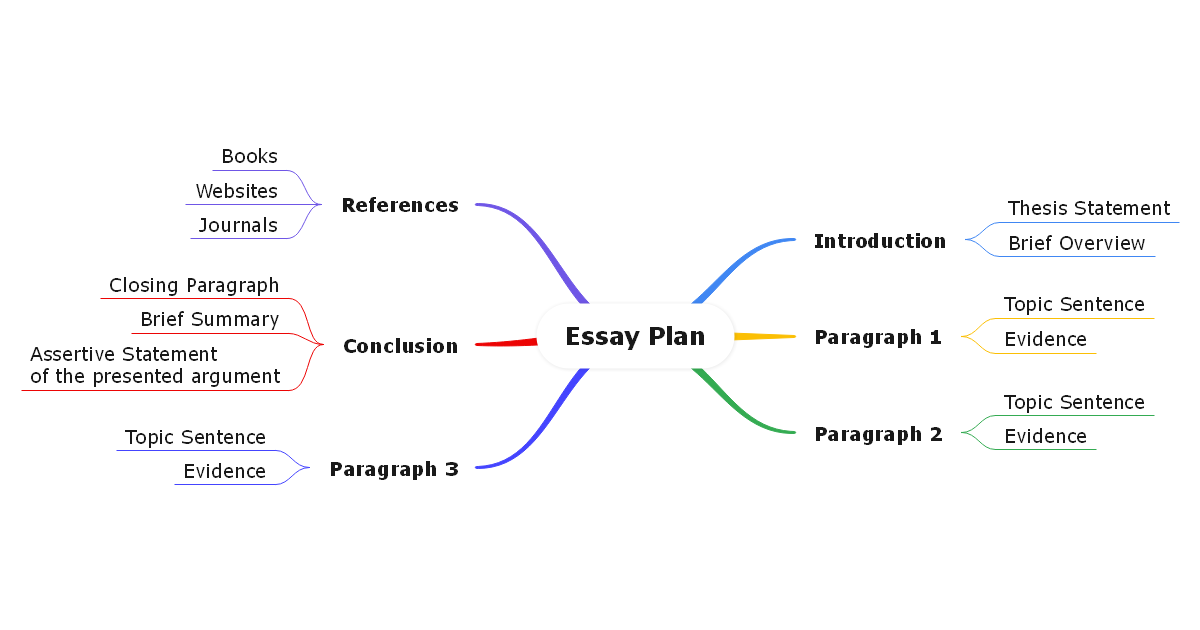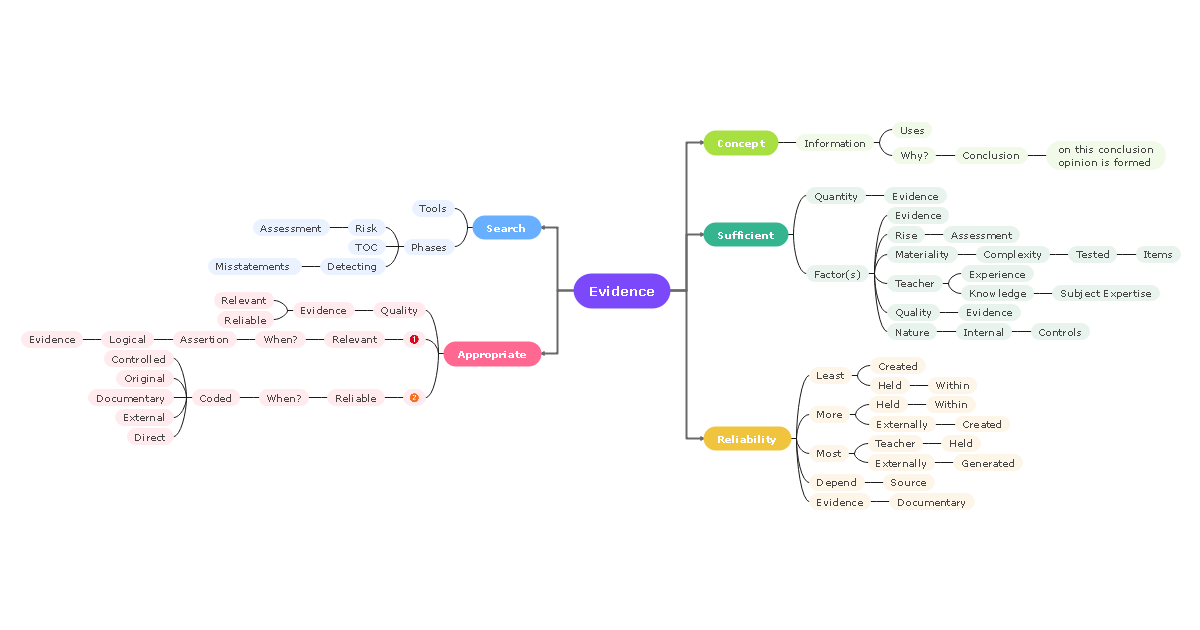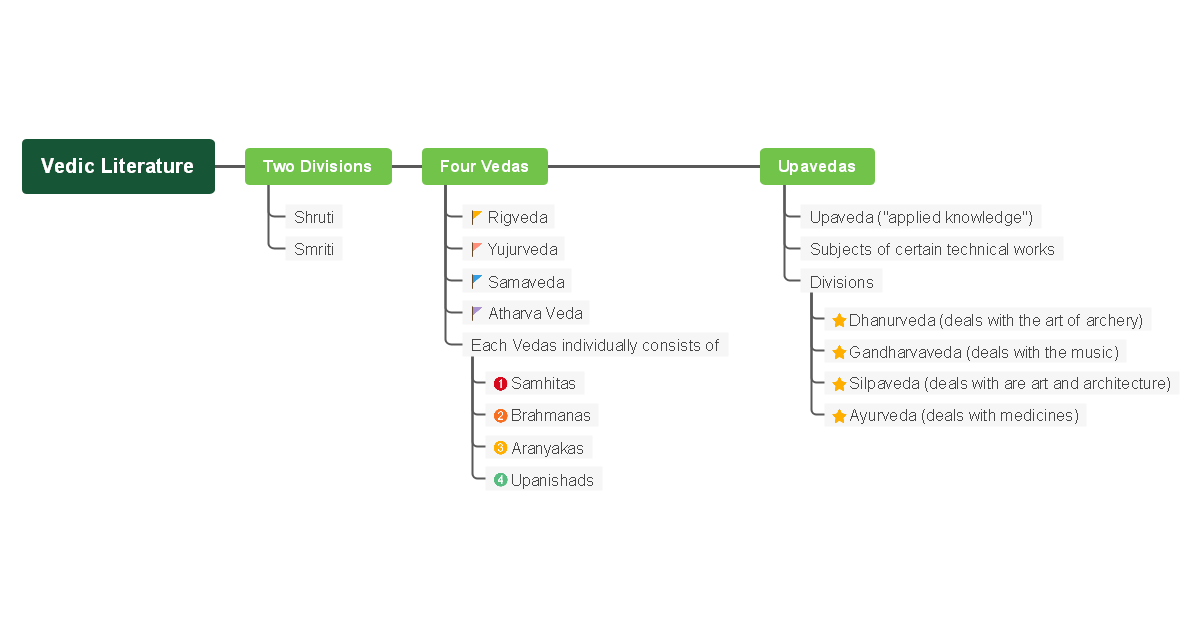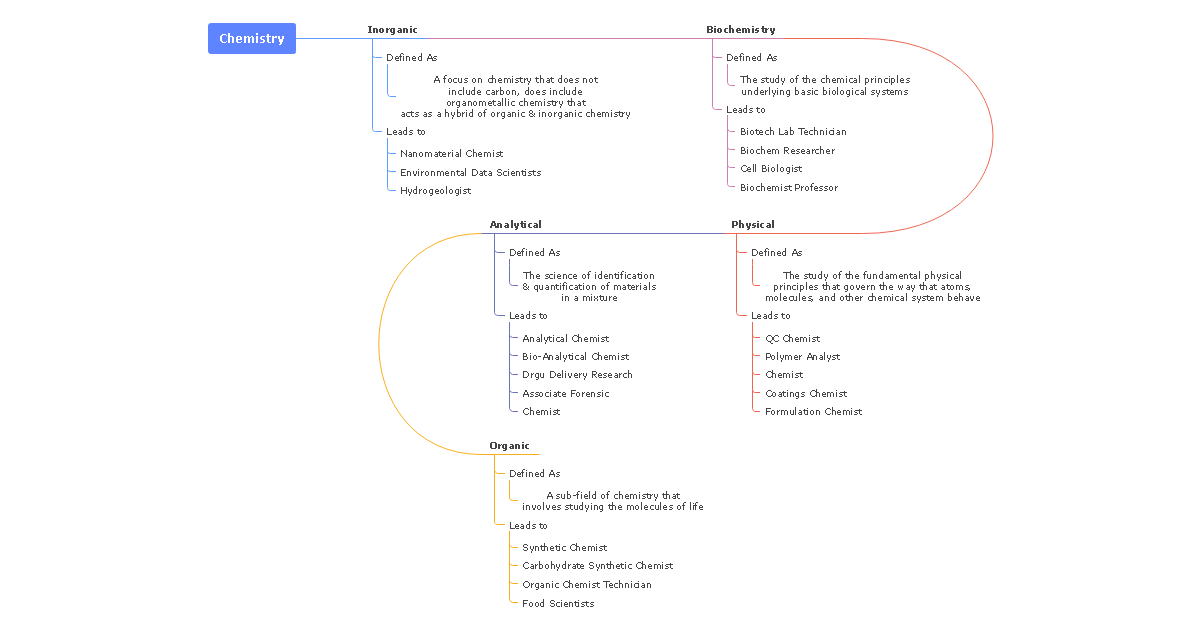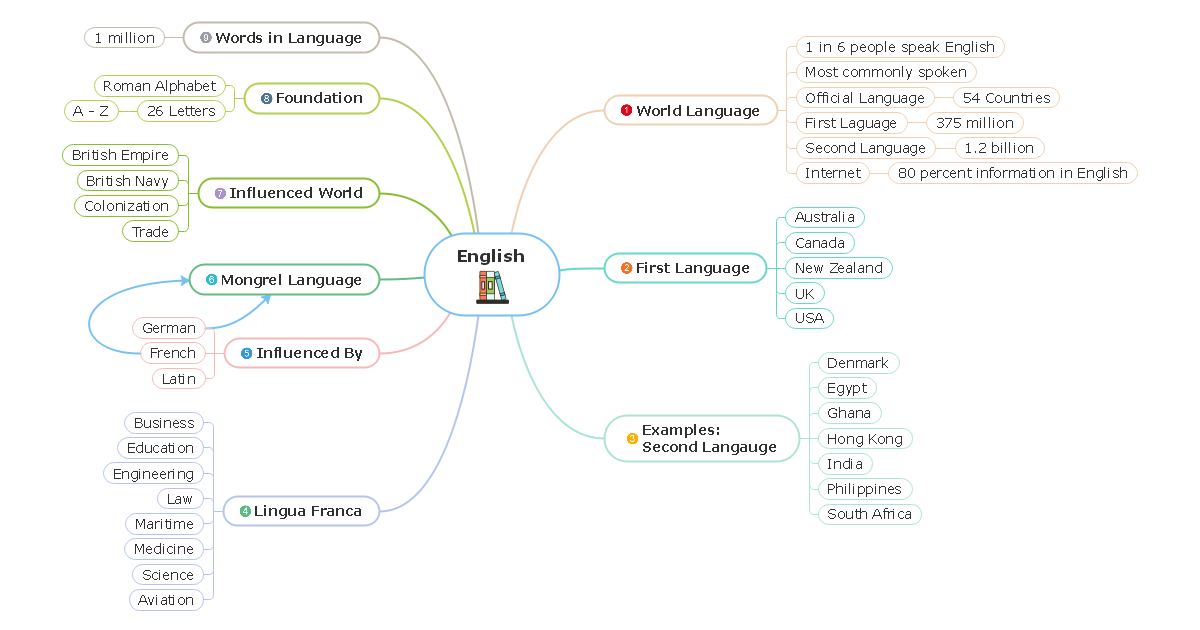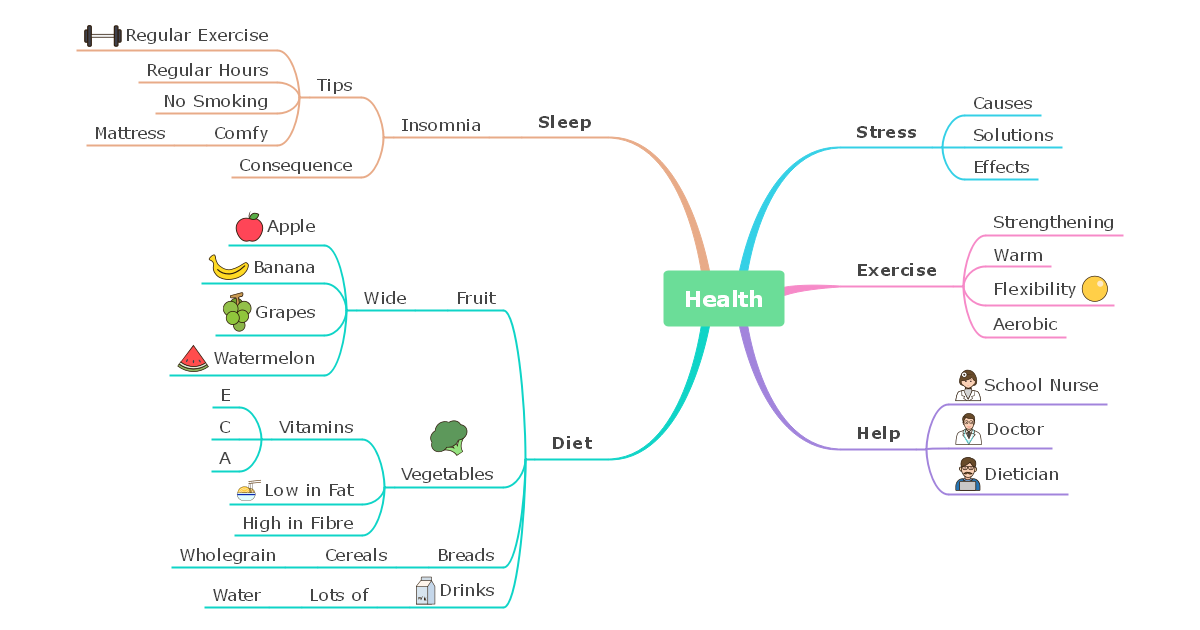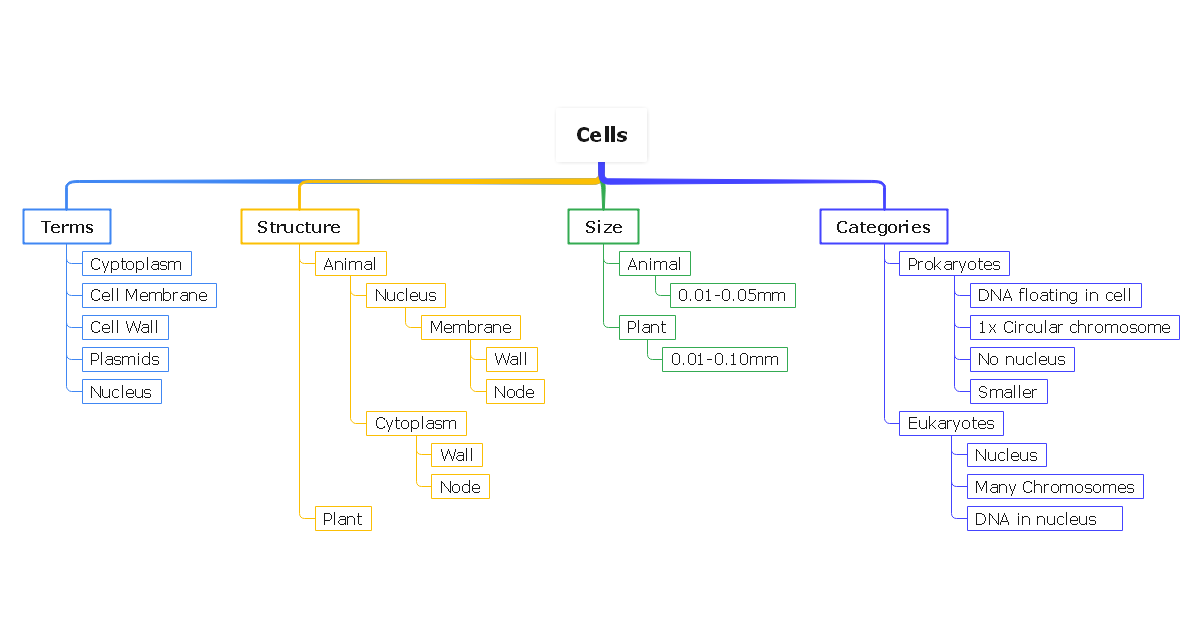Effective learning is the cornerstone for all those students who aspire to succeed academically. When it comes to understanding multiple subjects quickly, creating an educational mind map leads them to that success with ease.

A mind map for education is a graphical tool that mirrors the natural way our brain organizes information. As you will learn in this comprehensive guide, education mind maps radiate from a central idea and branch out into related concepts while ensuring that the depiction is visually appealing and engaging.
In this article
What is Mind Mapping for Education
An education mind map is a visual tool that students and teachers use to represent knowledge, ideas, and concepts in a structured manner. The mind mapping for education typically begins with a central theme or topic, from which different branches and subtopics are created. This hierarchical system of topics, subtopics, and interconnection helps students organize complex information.
These visual representations of information have revolutionized the way students grasp different subjects. At the same time, mind mapping in education has also helped teachers and academic professionals to easily guide their peers.
Benefit of Mind Mapping for Education
When it comes to academics, there are a multitude of advantages to creating a mind map. Some of the benefits of mind mapping for education that can transform your learning experience are:
- Enhancing Memory & Retention: For students, keeping a strong memory is very important. However, long and complex subjects tend to forget intrinsic details during the tests. In those cases, the visual and organized structures of mind maps allow them to digest and retain information.
- Improving Comprehension: With mind maps, educational professionals or students can break down complex topics into manageable interconnected topics. Students can then create visual connections between different topics and subtopics that help them gain a more comprehensive understanding of the subject.
- Boosting Creativity: Students tend to use different color codes, images, and connectors when they create mind mapping for education. This way, they directly boost their creativity. Detailed mind maps for education also provide a canvas for brainstorming and idea generation, which helps the students approach problems more creatively.
- Promoting Efficient Note-Taking: Note-taking is one of the most important skills every student should possess. However, with extensive lectures and complex topics, students tend to get confused with their notes. In these cases, mind maps help streamline such tedious note-taking processes.
How to do Mind Mapping for Education
Check out the following steps if you plan to make a mind map for education.
- Find Objective: The first step in creating an education mind map is understanding the objective. This would help you or others understand the reason behind the branches and interconnections you will make in the subsequent steps. Add that Central Theme or Main Topic in the middle to make it more relevant.

- Add Primary Branch: Now add the first layer of branches that would define your central theme. These primary branches should help the reader understand how we break down the Central Theme into different categories.

- Add Secondary Branches: From this primary branch, start adding secondary branches to refine them to their best. Adding these secondary branches is not mandatory as they depend on the complexity of your Central Theme, but if you can add them, then you will only be refining your topic to the fullest.

- Add Keywords: Keywords, phrases, and long sentences are the key to creating a detailed mind map for education. Start writing relevant keywords in your subtopics to define them. These keywords or phrases would later help you understand the Central Theme, so ensure you use phrases that relate to you.

- Find Connections: The most important aspect of any education mind map is to find the hidden connections between different topics. If you use education mind map examples from EdrawMind, try adding connections at all the relevant places. You can even change the colors of the connectors to give different labels.

Tips for Effective Education Mind Mapping
Mastering education mind maps not only requires understanding the concept but also how effectively you are using this visual technique. Here are a couple of topics that would help you enhance your mind-mapping skills:
- Keep it simple: Try not to overcomplicate the education mind maps. When creating the secondary branches, try adding concise keywords and short phrases to represent your concept, ideas, or information. An uncluttered mind map is visually appealing and is also easy to understand.
- Review & Revise Regularly: Mind maps provide a great way to study, but they are only valuable if you regularly revisit them and update the content as per your learning. You can also use education mind maps to create your study schedules and track your overall progress.
- Practice Mind Mapping Techniques: There are different types of mind maps, like horizontal timelines, vertical timelines, fishbone structures, tree mind maps, radial mind maps, and more. Try using different mind-mapping techniques for different scenarios.
Mind Map Education Examples for Teachers&Students and by Subjects
Mind Map Examples for Teachers
A teacher looks after several classes and subjects. In addition to this, most of the teachers are also responsible for exams and extracurricular activities. Making detailed notes for all the different classes can be tiresome and might create confusion for the teachers. In order to resolve such issues, teachers create an educational mind map that benefits them and their pupils. Here are some of the most common mind map examples for teachers.
1. Class Curriculum Mind Map
Curriculum planning mind map shares vivid information about the relationships between school academics and curriculums through a standardized representation. Teachers use curriculum planning techniques to imagine, research, and arrange topics, exams, and materials. A class curriculum mind map is a visual method that allows students to directly fetch answers to specific questions. The curriculum plan boosts continuous development, and therefore, it requires frequent experimentation and trial and error. The class curriculum mind map can be used for primary and secondary education to manage plenty of tasks. For example, the whiteboard is a familiar concept in school where the key concepts are highlighted. The same can now be achieved through a class curriculum mind map.
A class curriculum mind map is ideal for facilitating the questions, visualizing attentive details, and enabling various perspectives.
2. Direct Speech Mind Map
Speech has many forms, and direct speech is a representation of actual words of the narrator. In certain cases, a direct speech mind map is extremely helpful in putting out the exact words being spoken. Quotation marks, inverted commas, and synonyms are also depicted well through a direct speech mind map, assisting readers to feel engaged and get a grasp of the characters better. When a direct speech mind map is used, speech can be simplified by turning the thoughts in mind directly into visuals. Additionally, there can be multiple additions in a direct speech mind map that will allow one to link one point with another and expand the mind.
A direct speech mind map is composed of many elements, keywords, and phrases that are easy to memorize. Furthermore, the intuitive pattern of a speech mind map is uncomplicated to remember.
3. Knowledge Quiz Mind Map
The human reproductive system is made of zillions of cells and organs. In order to know the various aspects of sexual reproduction, a knowledge quiz mind map is drawn, which offers enhanced insight into the sexual life cycle. Biology is a vast subject, and covering every area could be tricky. Therefore, a knowledge quiz mind map acts as a biology library and allows students to brainstorm the answers. A knowledge quiz mind map is designed to visually represent the process that takes place in the sexual life cycle, and students can invest their minds in unlocking answers to track the steps.
By creating a knowledge quiz mind map, identifying the different steps of the sexual process becomes very easy.
4. Lesson Activity Mind Map
Students often use lesson activity mind maps to increase their creativity and sketch their opinions. For students, the classroom is their playground where they put their creativity to practice. Using a lesson activity mind map, all the thoughts are laid out, further assisting students in channeling their inner thoughts. With a lesson activity mind map, students can explore the scenarios where their mind works best. Schools aim to skill students with vital information that they need to progress. In such cases, a lesson activity mind map gives them a chance to set up their future goals.
A lesson activity mind map activity works for students of all age groups and forces them to engage and build critical thinking.
5. Lesson Plan Mind Map
There are plenty of techniques that teachers follow to give a brief to students on the pain areas they should concentrate on. Teachers can utilize the benefit of a lesson plan mind map by illustrating effective lesson plans. Evaluation, resources, objectives, activities, class discussions, and assessment are the key parts of a lesson plan mind map. Each part plays an individual role in uplifting the learning experience for students and meeting the desired objectives. Moreover, a lesson plan mind map is a convenient solution for educators to explain the individual lessons to the entire class.
Lesson plans are the first step that leads to creating a full-fledged curriculum. A lesson plan mind map acts as a roadmap for students that amplifies their career.
Mind Map Examples for Students
Creating educational mind maps for students is very important, as it improves their cognitive skills and makes them self-learners. Here are some of the most important mind map examples for students that you can use for your academic needs.
1. Central Idea Concept Mind Map
When there are several key themes, a central idea concept mind map can be created to distinguish each theme from the other. Every key composition is further divided into separate branches specifying the theme's needs. However, the central idea concept mind map accumulates all the key theme structures and lays them out visually. When there is more than one key theme around a central concept, it is ideal to use a color-coded scheme that differentiates one theme from the other. This identification can be done based on priority or importance. Through a central idea concept mind map, knowing the aspects of every key theme becomes accessible.
Moreover, the central concept mind map can also correlate one key theme with another using a specific color to establish a relationship between two themes.
2. Empathy Mind Map
An empathy mind map should have mandatory sections dedicated to actions, feelings, and thoughts. Empathy is a concept to comprehend. However, an empathy mind map accomplishes the goal. The objective of using an empathy mind map is to portray the empathetic design. The fundamental concept that an empathy mind map uses has six categories: see, pain, hear, say & do, think & feel, and gain. Every category is further branched out to explain its attributes explicitly. The map is centered around people who need a constant reminder of their individuality.
These categories in the empathy mind map represent the snapshot of the user's mind thoughts, feelings, and vulnerabilities. These maps are the best to record how humans use their emotions.
3. Essay Plan Mind Map
As a visual learner planning to create an outline of an essay, drawing an essay plan mind map can be a game-changer. By drawing an essay plan mind map, it becomes extremely easy to construct your passage. The essay plan mind map allows you to brainstorm and focus on the key takeaways of the essays. Additionally, it can also be used for collecting quotes, references, and arguments from diverse resources. To begin with, a mind map, create a rough outline essay structure placing all your research and ideas in place. After the plan is laid out, establish relationships between the arguments to display connections between the topics.
The use of an essay plan mind map is to draw a coherent skeleton of the essay before actually writing it on paper.
4. Essay Planning Mind Map
The objective of curating an essay is to deliver a descriptive, elaborative, and conceptual thought about a specific topic. The essay planning mind map is a visual thinking technique that gives the privilege to comprehend, summarize, and recollect your relevant subject. When students are given a writing assignment, drawing an essay map around it is a sensible area to begin. Creating an essay planning mind map on paper defines the entire idea in a radical structure. Moreover, as one sets out the branches of the essay planning mind map, they will mind themselves wandering in the depth of research and ignite more brainstorming ideas.
Starting with a central theme or idea subdivided into various essay topics is the perfect way to begin an essay planning mind map.
5. Evidence Mind Map
The core of creating an evidence mind map is to map out all the relevant facts. A shred of evidence is nothing without the right set of facts. Every fact has various components, which are laid out through an evidence mind map. The reliability of the evidence categorizes them on the further branched factors. Evidence mind map consolidates all these categories and branches them to provide a refined insight. Designing an evidence mind map will assist in providing a visual outline plan to conceptualize the evidence better.
Although it could be rough to picture initially, once the evidence mind map is created, understanding it becomes an uncomplicated process.
Mind Map Examples by Subjects
Students often study a magnitude of different subjects. Some of the most common subjects that are being taught to all the students worldwide are Literature, History, Mathematics, Science, and Sports. Here we have illustrated a couple of mind map examples by subjects.
1. Vedic Literature Mind Map
Vedic literature studies Indian religious texts, including Vedas, Upanishads, Brahmanas, and Aranyakas. It helps us learn about sources of knowledge about the Vedic and Aryan periods. The study is important for the students to learn about their ancient roots, the origination of the Sanskrit language, and the relationship between students and gurus. It helps them imbibe the true value of a teacher.
When students create a mind map of Vedic literature, it helps them understand Indian history in a simplified manner. This visual representation allows them to develop their social and behavioral science skills by learning their roots and how Indians used to lead their lives before the jati system.
2. Chemistry Mind Map
Chemistry is a branch of science related to studying compounds and elements, their structure, properties, and composition. It helps the students understand the world and every matter present in it. When students seek help from a Chemistry mind map, it helps them learn about the different areas.
With a mind map, the student develops the ability to break down complex information, understand the relationship between different aspects of Chemistry, and visualize the connection between them. With the mind map, the student gathers important information and can understand how one area of chemistry is interlinked to the other.
3. English Language Mind Map
English is a vast language, and there are many things to learn about it apart from grammar rules. While studying English as a language, learning about its origin, foundation, and influence is also important. Nevertheless, this is a concept that students are not able to memorize.
When students design an English-language mind map, it converts thoughts into a visual diagram. This brings clarity to the origin and relevancy of English. In addition, an English mind map ensures that the students have all the relevant information related to the language before beginning with the reading and writing parts of it.
4. Health Mind Map
Health is a vast concept and, contrary to popular belief, is not restricted to physical well-being. Various concepts come to mind while talking about an individual's health. It is related to diet, exercise, sleep patterns, and stress levels. A student learns about every concept gradually and tries to understand the significance and relation of one thing to another.
By creating a health mind map diagram, the student transforms the knowledge and produces a visual representation of all the learnings. This helps understand the relevance and find ways to manage sleep, exercise, diet, and stress.
5. Human Cells Mind Map
Cells are the building blocks and provide a proper structure to the body. Every human, animal, and plant body has trillions of cells, so it is difficult to understand each one of them and their functioning. A mind map simplifies this complexity and helps the students understand the cells' basic terminology, structures, categories, and size.
When the students create a human cell mind map, it provides a visual sketch of how the cells function and improves learning and understanding. Also, through the mind map, students gather all the relevant information about the major cell parts.
Conclusion
When it comes to knowledge and academic excellence, education mind maps have emerged as one of the most important tools. Education mind maps are more than just a visual layout of topics; but are also a gateway to innovation and understanding of complex topics. When you start creating such diagrams, try the education mind map examples from EdrawMind. This free mind mapping software offers free templates for students and professionals and also comes with multiple theme and layout options.
FAQ
-
1. How can I get started with mind mapping for my studies?
To begin with, find a topic that you want to create a mind map for. Then, start adding primary and secondary branches and find relevant connections between them. -
2. Can mind mapping help in retaining information for exams?
Yes, mind maps are an excellent medium to retain information for exams. When creating an education mind map, ensure you use different colors for different topics, as it would be easier for you to check during tests. -
3. How does mind mapping compare to traditional note-taking methods?
Unlike traditional note-taking methods, where you have one topic and write down all the important points underneath it, mind mapping takes a very creative approach. Here, you create different branches and add keywords associated with them. With mind maps, you can even create a timeline, fishbone, radial, and org charts.



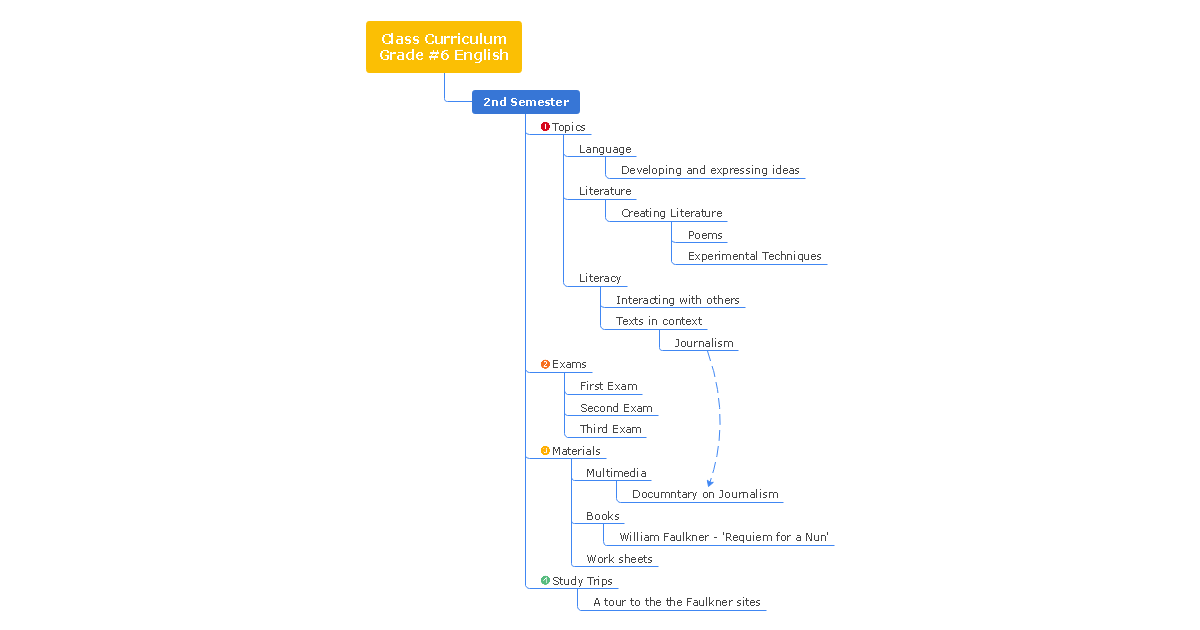
 below.
below.  below.
below. 